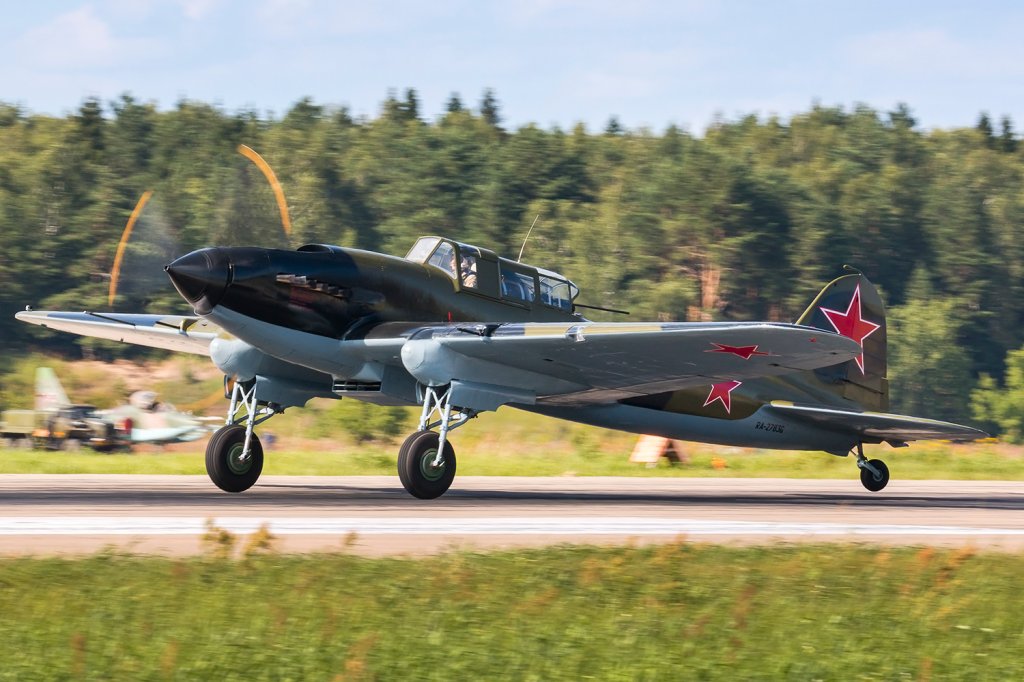

As World War II dragged on, life got really difficult for the German Luftwaffe. Not only did it start losing pilots and planes at an incredible rate, the pilots it did have were all overworked and (probably) underpaid. To top it all off, Allied air power technology only got better and better as time went on.
At the beginning of the war, Nazi fighters were on par or better than any aircraft in the world, but the needs of the war changed the Nazi regime’s priorities, and though it did invest in technical innovation, it could not keep pace with the Allies’ wartime aircraft development or production. It was probably unexpected that the biggest pain in the butt for German air force pilots came not from the United States or Britain, but from the Soviet Union.
In the earliest days of the war on the Eastern Front, the USSR’s air forces suffered heavy losses, just like its ground forces. But also like the Red Army itself, Soviet aircraft slowly began to turn the tide in the air.
Still, the Red Army needed air cover and support for its operations. When it needed close air support during a ground battle, there was no more welcome sight for the army – and no bigger pain for the Germans – than the Ilyushin IL-2 ground-attack aircraft.

The IL-2 was called the “Flying Tank” for a reason: it essentially was a flying tank. Used to hit targets on the ground with rockets, machine guns, and pretty much anything else it could carry, Given its mission, combined with a top speed that was little over half of comparable fighters, the Ilyushin-2 needed to be able to take a beating, especially from ground forces.
The Soviets built the IL-2 with more than 1,500 pounds of armor plating to protect its pilot and its water-cooled engine. The armor was a tradeoff, however. It protected the plane but made it more difficult to maneuver in a dogfight. Luckily for many Soviet pilots, it wasn’t designed for dogfighting.
The only real defense the IL-2 could speak of was its rear tail gunner, which was unfortunate for the officer who had to sit in at tail gunner. The reason it’s unfortunate is that much of the “Flying Tank” armor didn’t protect the gunner’s seat. The result of that extension meant the plane lost seven gunners for every pilot shot down. Still, it was a difficult undertaking for any German pilot to attack.

So when the armor was changed to protect the tail gunner (who covered the plane’s primary weak spot), the aircraft became a formidable airborne opponent. If a German pilot couldn’t bring the plane down by killing the pilot, then it makes sense to target something else, like its engine.
Its engine would have been a real liability were it not for the armor plating. Its V-12 water-cooled engine might have been a boon for any civilian aircraft that doesn’t spend most of its time getting shot at on the Eastern Front, but that’s not what the Ilyushin IL-2 was built for. Though powerful, it was relatively delicate and a single piece of shrapnel could have caused it to sputter to a stop. This is half the reason it had more than 1,500 pounds worth of armor – almost the weight of an entire Japanese Zero.
Its ability to take a beating and its ease of manufacture made it the most mass-produced aircraft in history. Though it could take just about anything the enemy could throw at it, it turns out the enemy could throw a lot at it. Of the 36,183 IL-2 built during the war, only a handful survive today.
